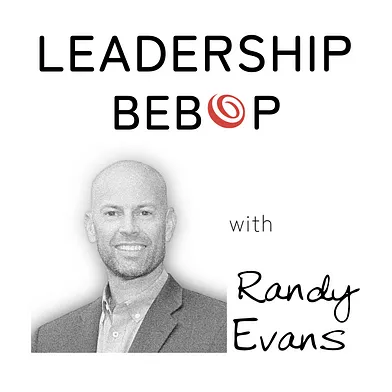Effective Listening is the Key to a Thriving Workplace Culture
How often do you really feel heard in your workplace? Are you practicing effective listening in your interactions so the other person feels heard? In a two-part series on my recently launched Leadership Bebop Substack newsletter, I explore this theme, tying this into the hit FX TV Show, the Bear. Keep reading for a brief preview and some background on what inspired me to write about this.
Hat Tip to My Kids for Introducing me to the FX TV Show, The Bear
I am so grateful for my three children, two sons and a daughter, all in their twenties. I’m constantly amazed at what they teach me: profound life lessons, health and fitness advice, new developments in science and technology, and entertainment tips. Spending time with them brings me immense joy and optimism, and I am thankful for our deep connections.
Last summer, my younger son told me about The Bear, the FX TV series streaming on Hulu. He enjoyed the show’s culinary focus, incredible writing, engaging plot, and compelling characters. My older son had also finished the first season and pointed me to a crucial theme in the show about communication and “feeling heard” in the workplace.
After watching the first season, I decided to write about this theme, feeling heard at work, tying this into my work on team communication and constructive conflict engagement. Season 2 just recently dropped on Hulu and contains many life and business leadership lessons. In my recently launched Leadership Bebop Substack newsletter, I revisit the first season to explore this theme of feeling heard at work and the value of engaged listening. [Sign up here to subscribe and access the article.]
Caveat Videntium (Viewer Beware): Abundant Trigger Warnings For ‘The Bear’
The Bear, created by Christopher Storer, centers on an award-winning ‘rising star’ chef, “Carmy” (Jeremy Allen White), who leaves the fine dining world to run the small, disorganized, financially strapped Chicago deli left to him by his older brother Michael (Jon Bernthal), who died by suicide.
The show takes viewers on an emotional roller-coaster ride, with many tense moments, fiery arguments, lots of profanity, lighthearted humor, and deeply serious topics.
Through a gritty and meticulous exploration of the deli’s kitchen and the messy lives of its staff, The Bear offers many practical lessons, including insights on how we can still come together even in hard times.
Philosopher Martin Heidegger suggested that “angst,” the generalized sense of apprehension or unease that we all experience, is essential for understanding everyday life. He also argued that “care” – our concerns, devotion, intentions, feelings, and interest in our own existence – is the practical connection that unites us in our shared experiences, giving meaning to the various aspects of our being in the world.[1]
This deep sense of unease is deeply entwined in all of life’s pursuits and colors the complicated realities of our relationships (with ourselves and others). This is on full display in The Bear.
Throughout the first season, the dialogue and storylines explore this dynamic of evolving self-awareness, discovering purpose, and shared efforts to build meaningful relationships and make sense of the world together.
The show has no “work-life balance,” no division between life in the kitchen and the characters’ personal lives; it all melds together. In this sense and many other ways, The Bear feels like a microcosm of the modern global workplace.
Conflict Communication Lessons In ‘The Bear’
The kitchen staff in The Bear frequently say “heard” and “yes, chef,” acknowledgments common in commercial kitchens (or so I’m told). Yet it is clear that the characters do not feel heard. This dichotomy is brought center stage in Episode 3 of the first season (discussed in detail in Part I of my article).
A recent study on workplace communication explores this distinction in detail, demonstrating that engaged listening is sufficient for someone to feel heard in some situations. In other situations, though, acknowledging someone during the initial exchange, and even demonstrating good listening, may be inadequate. In these situations, taking action or following through on expectations may be required for the other person to feel heard.
In a two-part series, I explore this distinction between someone’s perception of their listening effectiveness and whether the other person actually feels heard. Put another way, while good listening is critically important, this may not be enough to drive employee engagement.
Part I of my article discusses the continuing increase of workplace stress and explores the lessons in The Bear for transforming conflict into constructive conversations. Part II examines the recent study of workplace communication, emphasizing the significance of listening and the various contexts that affect employees’ impressions of being heard (or unheard) in workplace conversations.
I hope you enjoy my thoughts on the show’s insights and this important research on workplace communication. I’d love to hear your insights, thoughts, and experiences. [1] I fully understand the futility of summarizing Heidegger’s philosophy in a single short paragraph. But the entirety of the TV show The Bear feels Heideggerian. For a fuller exploration of Heidegger’s work, see Heidegger, M. (2013). Being and time. (Kindle edition). Location 11322. https://www.amazon.com/dp/B00B928VUE. See also Braver, Lee. Heidegger: Thinking of Being (Key Contemporary Thinkers) (p. 63). Wiley. Kindle Edition. https://www.amazon.com /dp/B00JNOFYC8.
[1] I fully understand the futility of summarizing Heidegger’s philosophy in a single short paragraph. But the entirety of the TV show The Bear feels Heideggerian. For a fuller exploration of Heidegger’s work, see Heidegger, M. (2013). Being and time. (Kindle edition). Location 11322. https://www.amazon.com/dp/B00B928VUE. See also Braver, Lee. Heidegger: Thinking of Being (Key Contemporary Thinkers) (p. 63). Wiley. Kindle Edition. https://www.amazon.com /dp/B00JNOFYC8.

